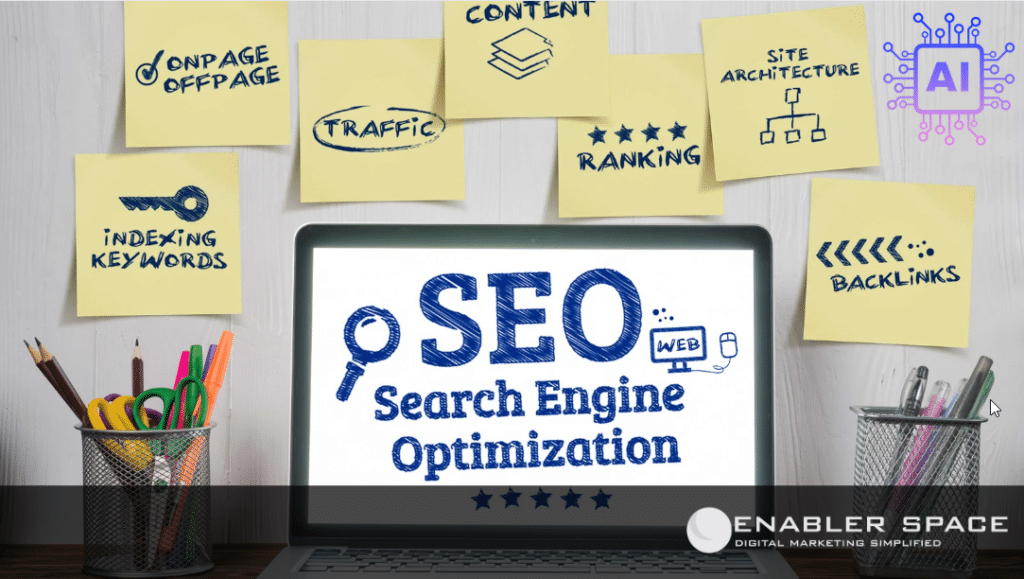In the digital age, AI is transforming content marketing. Discover 20 advanced strategies to revolutionize your content ideation and creation process with AI in 2024. From topic generation to content optimization, learn how to leverage AI tools for SEO-friendly, engaging content creation with real-world examples.
Keyword-Driven Topic Generation
- AI-Powered Keyword Analysis:
- Use AI tools to analyze trending keywords and generate content ideas. For instance, analyze keyword trends related to “sustainable fashion” to create a blog post about eco-friendly clothing brands.
- Semantic Keyword Expansion:
- Expand your content ideas using AI-driven semantic analysis. For example, generate content ideas related to “digital marketing” by exploring semantic variations like “online advertising” and “social media marketing.”
Personalized Content Recommendations
- Behavioral Segmentation:
- Utilize AI algorithms to segment your audience based on behavior. For instance, recommend personalized content to users interested in “healthy recipes” based on their browsing history.
- Dynamic Content Creation:
- Create dynamic content variations based on user preferences. For example, a fitness app can use AI to generate personalized workout routines tailored to each user’s fitness level and goals.
Content Expansion and Enhancement
- Automatic Summarization:
- Summarize lengthy content using AI algorithms. For instance, summarize a research paper on climate change to create a concise infographic highlighting key findings.
- Multilingual Content Creation:
- Translate content into multiple languages using AI-powered translation tools. For example, translate blog posts about travel destinations into Spanish to reach a wider audience.

SEO Optimization
- Advanced Keyword Research:
- Conduct in-depth keyword research with AI tools to identify long-tail keywords and optimize content accordingly. For example, use AI to discover long-tail keywords related to “home gardening tips” and incorporate them into blog posts.
- Content Structure Optimization:
- Optimize content structure with AI-driven tools. For instance, use AI to analyze the readability of blog posts and suggest improvements to enhance user experience and SEO.
Creative Content Formats
- Interactive Content Creation:
- Create interactive content such as quizzes and assessments using AI platforms. For example, a skincare brand can create a quiz to help users find personalized skincare routines based on their skin type and concerns.
- Visual Content Generation:
- Generate visually appealing content assets like infographics and videos with AI-powered design tools. An example would be the use of AI to create an animated explainer video showcasing the benefits of a new product or service.
Content Collaboration and Co-Creation
- AI-Facilitated Brainstorming Sessions:
- Organize brainstorming sessions with AI-powered tools to generate content ideas collaboratively. For example, use AI chatbots to facilitate brainstorming sessions where team members can contribute ideas and receive instant feedback.
- Virtual Writing Assistants:
- Collaborate with virtual writing assistants equipped with AI capabilities. For instance, use AI-powered writing assistants to draft blog posts and articles, providing suggestions for improvement in real-time.
Content Performance Monitoring
- Predictive Analytics Modeling:
- Use predictive analytics models to forecast content performance metrics. For example, predict the potential reach and engagement of social media posts using AI algorithms based on historical data.
- Sentiment Analysis and Audience Feedback:
- Analyze audience sentiment and feedback with AI-powered tools. For instance, use sentiment analysis to gauge audience reactions to content and adjust future strategies accordingly.
Content Automation
- Automated Content Distribution:
- Automate content distribution across channels and platforms with AI-driven scheduling tools. A good example would be to schedule social media posts and email newsletters in advance using AI automation tools to reach your audience at optimal times.
- AI-Powered Email Marketing Automation:
- Streamline email marketing campaigns with AI-powered automation. For starters, it’s possible to, use AI to segment email lists based on user behavior and preferences, delivering personalized content and offers to subscribers.
Content Quality Assurance
- Plagiarism Detection and Content Originality:
- Ensure content originality with AI-powered plagiarism detection tools. It’s very plausible to use AI to scan content for duplicate or plagiarized sections before publication to maintain credibility and avoid penalties.
- Grammar and Style Checks:
- Improve content quality with AI-driven grammar and style checking tools. This is basically about using AI to proofread blog posts and articles, correcting spelling and grammar errors while maintaining consistency in style and tone.
Content Strategy Optimization
- Competitor Content Analysis:
- Analyze competitor content strategies and performance with AI tools. For example, use AI to identify gaps in competitor content and create content that addresses similar topics with a unique angle or perspective.
- Content Lifecycle Management Optimization:
- Optimize content lifecycle management with AI-powered insights. It’s very possible to use AI assistance to analyze the performance of evergreen content and identify opportunities for repurposing or updating existing content to extend its lifespan and maintain relevance.
By embracing AI-powered strategies for content marketing in 2024, businesses can enhance creativity, efficiency, and effectiveness across all stages of the content lifecycle. From ideation to performance monitoring, AI offers a wealth of opportunities to optimize content marketing strategies and drive tangible results. By implementing these 20 innovative strategies, businesses can stay ahead of the curve and achieve content marketing success in the evolving digital landscape.

